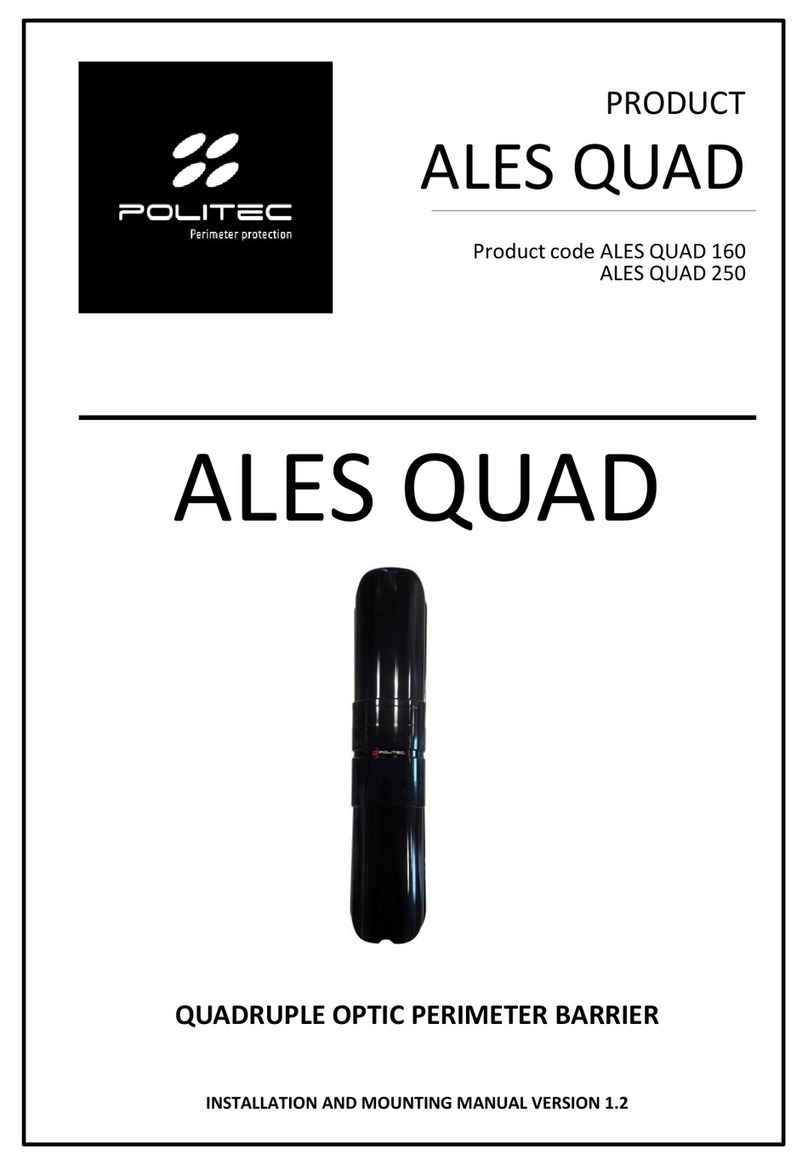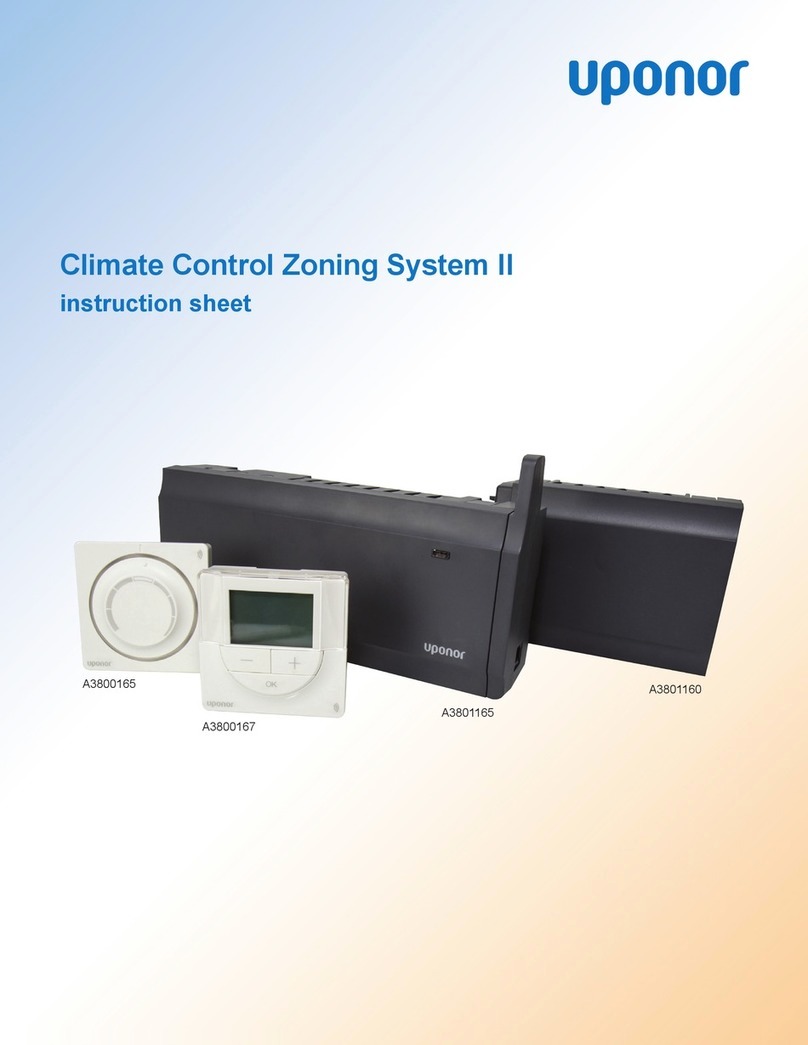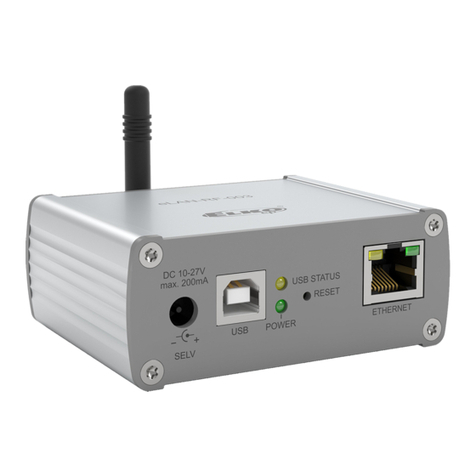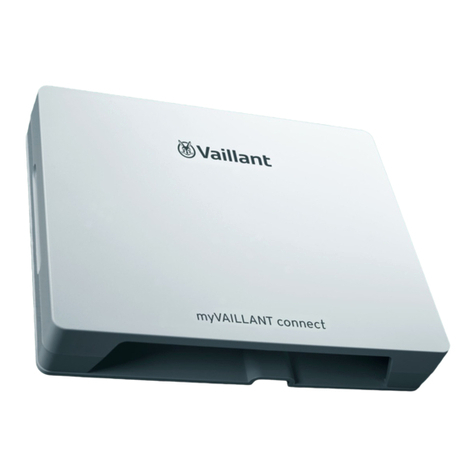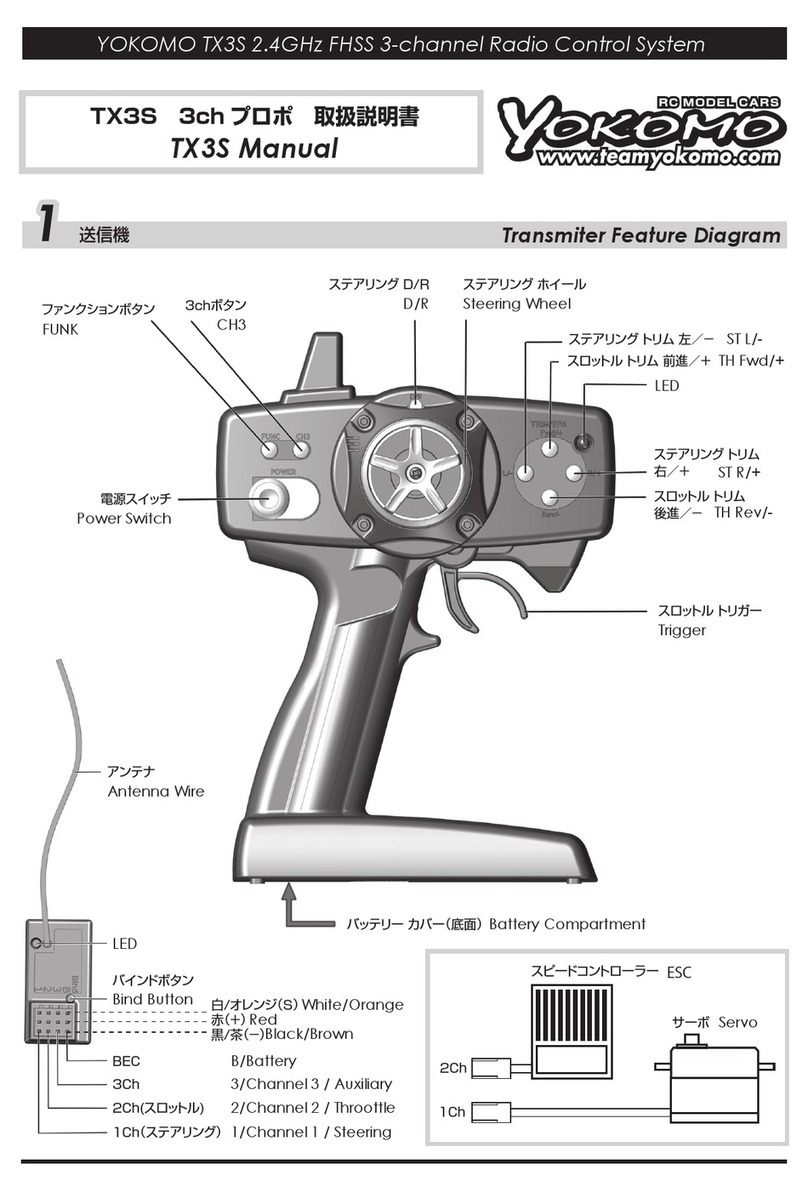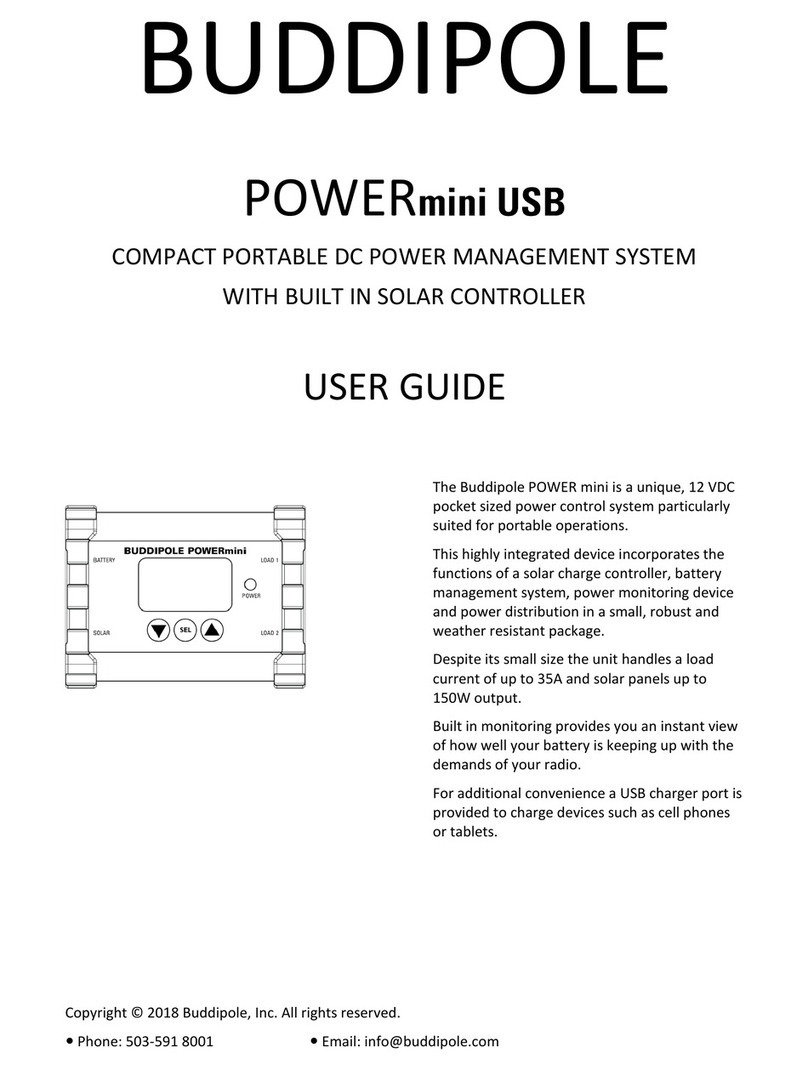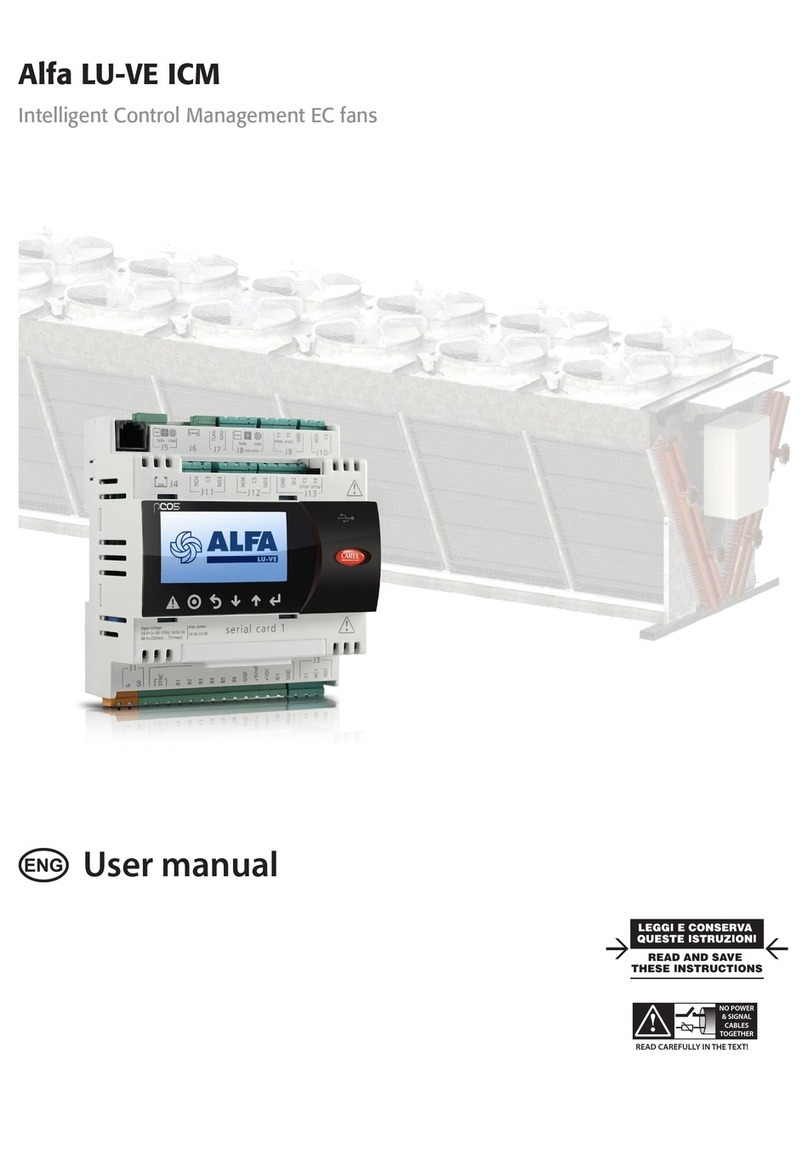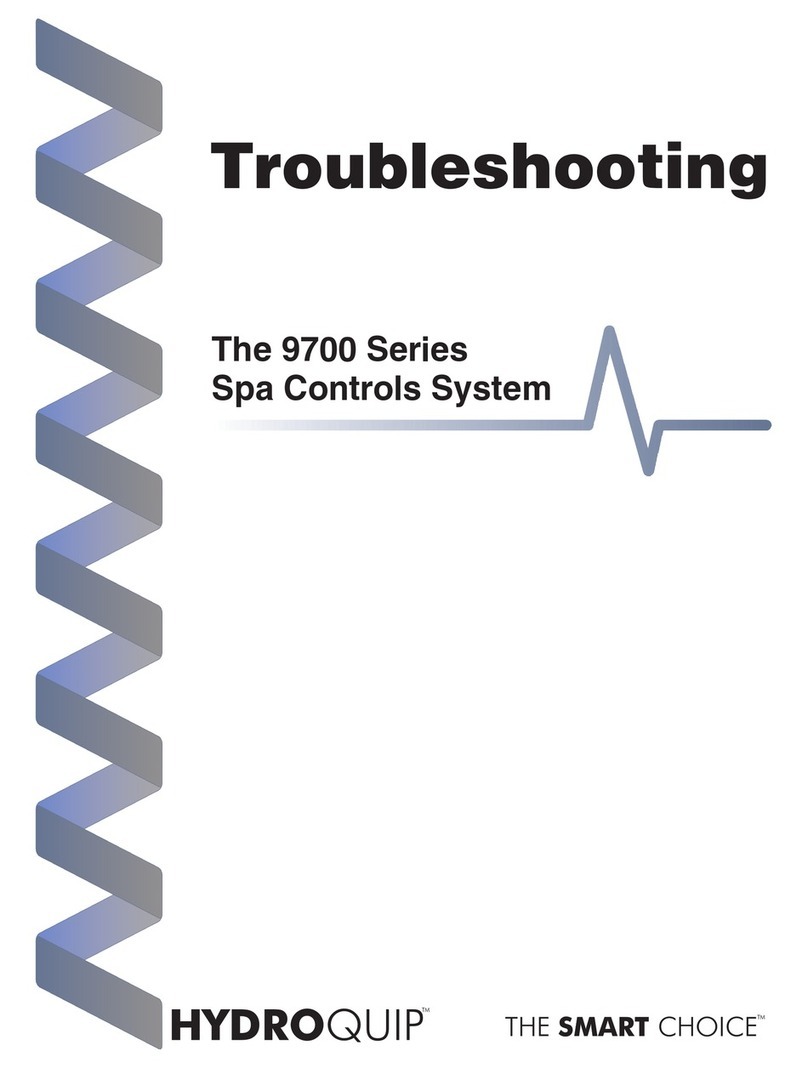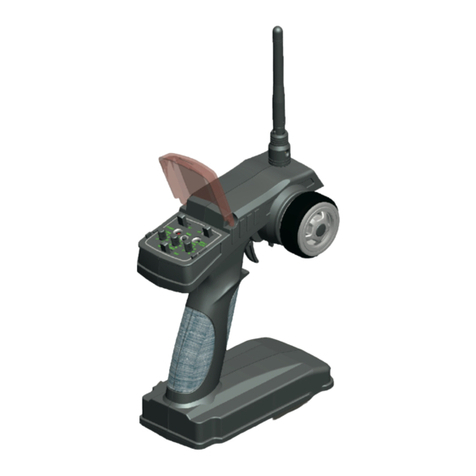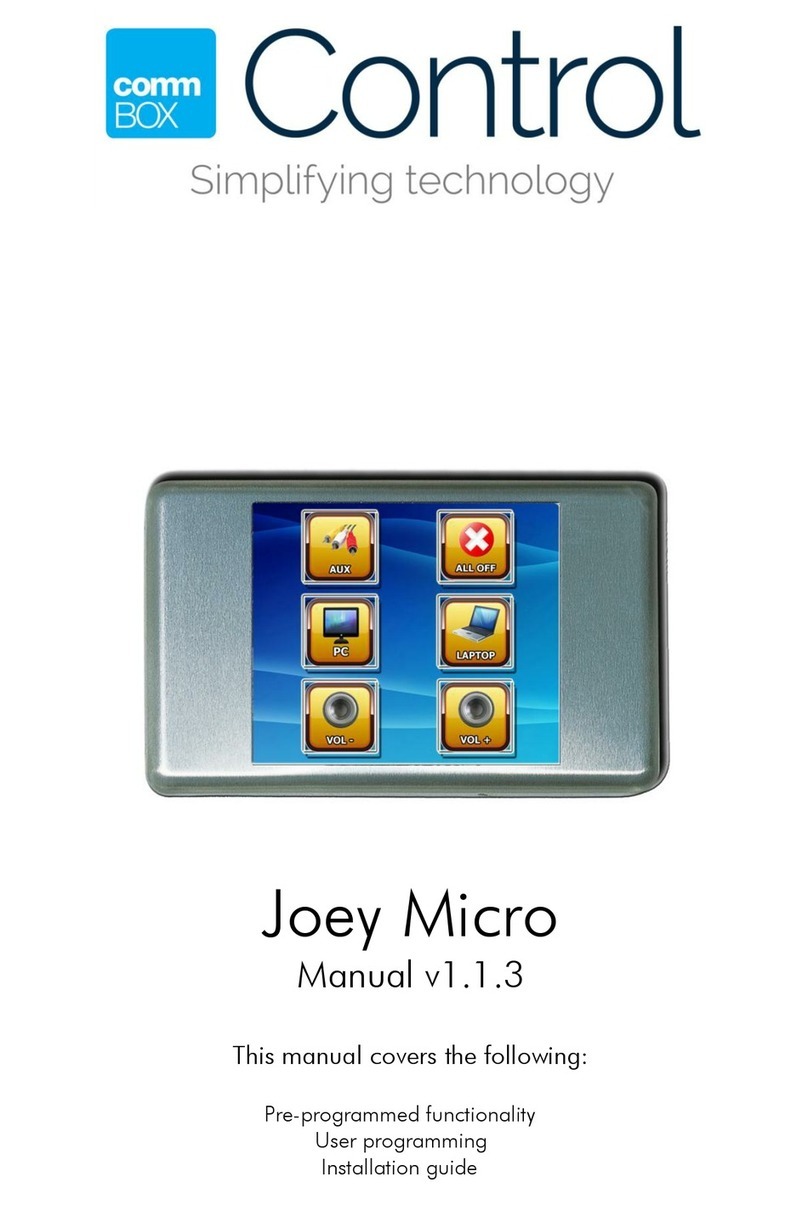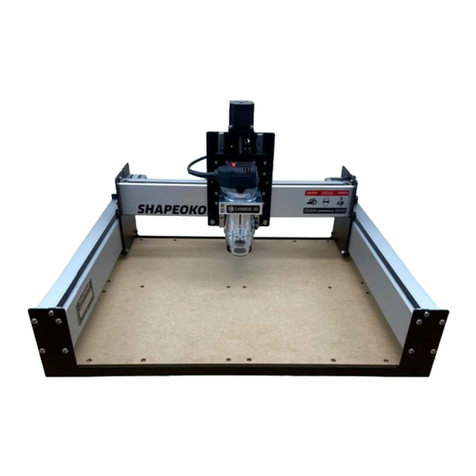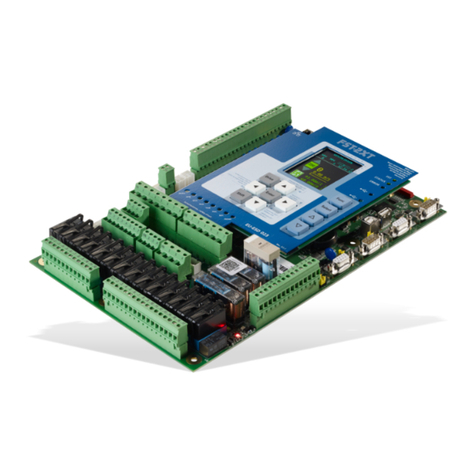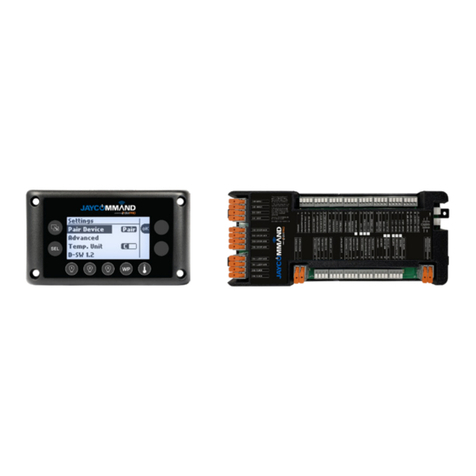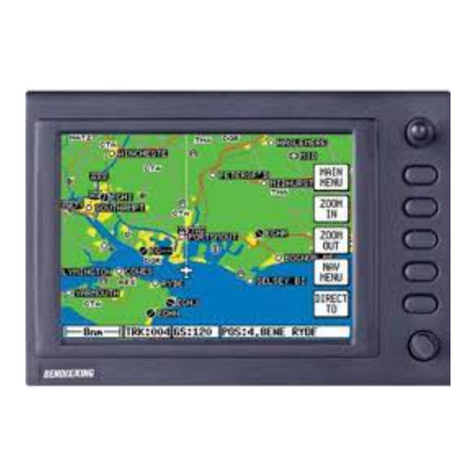Politec SANDOR WS SMA Manual

PRODUCT
SANDOR WS
SANDOR WS SMA
Product code SANDOR WS SMA
DOUBLE OPTIC PERIMETER BARRIER
INSTALLATION AND MOUNTING MANUAL VERSION 3.1

Table of contents
SANDOR WS SMA POLITEC | INSTALLATION MANUAL - VER.3.1
1.Introduction…………………………………………………………………………………………………………………………….……...3
2. Product description ……………………………………....…………..……....………............……........................….…....3
3.General warnings…………………………………………………………………………………………………………...…………..…. 4
3.1 Additional warnings for devices powered by mains voltage
3.2 Installation warnings
4.List of main components ……………………………………………………………………………………….........………………..5
5.Preparation for installation .................................................. ............................................................... 6
5.1 Preparation of the barrier parts before installation
5.2 It is advisable to carry out
6.Assembly and positioning of the cable pit………………..…………………………………………………....…………...….7
6.1 Assembly and installation
6.2 Cable pit positioning
7.Evaluations before installation………………………………………………………………....…………......………..………… 9
7.1 Introduction to barriers
8.Barrier positioning………………………………………..………………………………....……………........……………....……..10
8.1 Precautions before installation
9.Installation examples …………………….…..…………………………………………………………………....……………….....11
9.1 Barrier positioning
10.SK WS RX Motherboard connections………....…………………………………………………….........…….…....……..12
11.SK WS TX Motherboard connections……………....………………………………………………......…………..………...13
12.Barrier alignment …………………………………………………………………....……………………...........………………… 14
12.1 Calibration using SMA system
12.2 Alignment
13.Intervention time adjustment ………………....…………………………………………………………........……………… 18
14.Details and functions …………………………..………………....………………………………………………………...……... 19
14.1 SK WS TX motherboard
14.2 SK WS RX motherboard
14.3 Transmitter optic
14.4 Receiver optic
15.Technical specifications ……………………………………………………………………………………………………..……… 23
16.FAQ…………………………………………………………….………………………………………………………….....….………….…24
17.Product disposal………………………………………………..……………………………………………….............……..…… 26

1.Introduction
3
SANDOR WS SMA POLITEC | INSTALLATION MANUAL - VER.3.1
Congratulations on having purchased the Politec perimeter barrier.This appliance guarantees
long-lasting and reliable operation if installed correctly.For correct and effective use, it is
necessary to read this instruction manual carefully.
The system has been designed to detect intrusions and activate the alarm; it is not a
device that prevents intrusion.Politec is not responsible for damage, injury or loss
caused by accidents, theft, force majeure (including momentary lightning-induced
overcurrent), abuse, improper or incorrect use, faulty installation or inadequate
maintenance.
2. Product description
The double optic infrared perimeter barrier consists of an infrared receiver and transmitter.
Operation is based on "AND" logical operations: in other words, the alarm is activated only in the
event of simultaneous interruption of two superimposed beams.
N.B.:These barriers use optical synchronism.The receiver must see ONLY and exclusively its
transmitter.MUST NOT see signals from other barriers, IR lights such as photocells or flashing
lights.It is not recommended for use in indoor applications where there are many reflections
and light sources
This barrier is ideal for perimeter protection of internal and external areas.
The main features of this barrier are:
•Adjustable intervention time which allows you to adapt to the characteristics of the site to be
protected;
•Protection beam angle adjustment both vertically and horizontally;
•Set-up for mounting on a wall, on a pole and on aluminium columns;
•Optical alignment with SMA function;
•Adjustable configuration for managing each individual optic
•Contact signalling barrier opening.
Warnings
Mounting, installation of the barrier and connection to the mains must be carried out
by expert and qualified personnel, in compliance with rules and regulations applicable
to electrical systems.

3.General warnings
4
SANDOR WS SMA POLITEC | INSTALLATION MANUAL - VER.3.1
This installation manual contains important information regarding safety for installation: it is
necessary to read all the instructions before proceeding with the installation.
Keep this manual for future use.
•If you have any questions or doubts during installation, do not carry out any operations and contact
the distributor's support service.
•Use of these products for purposes other than those specified in these instructions is prohibited.
•You must not make any changes to the components of the product unless stated in the manual in
order not to void the warranty; such operations can only lead to malfunctions; Politec assumes no
liability for malfunctions or damage due to modified products.
•Depending on the specific situation of use, check for the need for additional devices: detectors or
signalling devices.
•During installation, mounting and use of the product, make sure no foreign objects (solids, metals
or liquids) are able to penetrate inside the open devices.
•Manufacturer's liability:Politec assumes no liability for failures resulting from incorrect installation;
lack of maintenance, incorrect assembly or use.
•Politec is also not liable for incorrect or incomplete operation of the product or failure to detect
intrusion.
•Warranty (summary of conditions):Politec guarantees its products for a period of 2 years from the
production date.The warranty is applied to those purchasing directly from Politec; there is no
warranty for the end user who, in the event of breakdowns or faults, must contact the installer or
dealer.
•The warranty excludes aesthetic parts as well as parts subject to normal wear and parts subject to
normal consumption such as batteries and accumulators.
3.1 Additional warnings for devices powered by mains voltage
This manual is intended only for technical personnel qualified to install such devices.
•Assessing the hazards that may occur during installation and use of the system, in order to achieve
complete safety, it is necessary that installation takes place in full compliance with applicable laws,
methods, rules and regulations.
•Before accessing the internal terminals of the product, it is necessary to disconnect all the power
circuits.
•If automatic circuit breakers or fuses trip, before resetting them it is necessary to identify the fault
and repair it.
3.2 Installation warnings
•Check that all the material to be used is in excellent condition and suitable for use.
•Before proceeding with the installation, check the environmental class of the products in the
"technical specifications" chapter.
•Check, by comparing with the values shown in the paragraph "technical specifications", that the
range of the devices is equal to or lower than the physical distance between the barriers.
•Check that the barrier is positioned in areas protected against potential impact, in flat areas and on
fixed supports to avoid oscillations.
•Do not place the system components close to heat sources as they could be damaged.
•Each barrier has its own operating principle: check the instructions for choosing the right position
in the respective instruction manual.

4.List of main components
5
SANDOR WS SMA POLITEC | INSTALLATION MANUAL - VER.3.1
The package contains the following components and accessories.
When opening the package, check that everything has been included.
No.
COMPONENT
1
Aluminium profile
2
Caps
3
Transmitter
\Receiver optics
4
SK WS RX / TX motherboard
5
3.6V 19Ah lithium battery
6
Black polycarbonate cover
2
3
1
4
5
6
2

5.Preparation for installation
6
SANDOR WS SMA POLITEC | INSTALLATION MANUAL - VER.3.1
5.1 Preparation of the barrier parts before installation
Since the communication between the barriers can take place wired, via wireless and their alignment
can be done optically, it is advisable to firstly check all the component parts of the barriers and any
accessories before beginning the installation.
5.2 It is advisable to carry out:
•device configuration on a table;
•a check on the operation of the optical and acoustic alignment
•the permanent fixing of each device;
•the preparation and carrying out of electrical connections.
In order to avoid errors, operating and installation problems, it is advisable to proceed as follows:
a) Place all the products with the package open on a table;
b) For the low consumption barrier version for wireless models with universal circuit board housing,
insert and connect the radio transmitter, and connect it to the barrier receiver board
c) Power up the barriers and program them
d) Test barrier operation;
e) Place (without fixing) the barriers at the planned points;
f) Place (without fixing) all the other devices at the planned points;
g) Check for each barrier that there is sufficient field for radio communication (for wireless versions);
h) Permanently fix the barriers.
Before proceeding with the installation, it is necessary to check the integrity of the product, the
adequacy of the model chosen and the suitability of the environment intended for installation:
• Check that all conditions of use fall within the "limits of use" and in the "Technical specifications of
the product".
• Check that the environment chosen for the installation is compatible with the total footprint of the
product.
• Check that the surface chosen for the installation of the product is sturdy so as to ensure stable
fixing and that it is adequately protected against possible impacts or the elements.

6.Examples of mounting/fixing
7
SANDOR WS SMA POLITEC | INSTALLATION MANUAL - VER.3.1
6.1 Placement and installation height
Position the barrier considering the type of surrounding environment and the protection distance for
correct and effective operation.
Position it in such a way that there are no obstacles in its range of action (trees/plants or objects that
can swing or move with the wind or rain).
Position the barrier so that sunlight does not hit it directly near the RX sensors.
In any case, it is necessary to take into consideration the specific beam diffusion of each model, to
avoid reflection of the beams caused by the ground or by adjacent objects.
Pole mounting
with SAN/PL
brackets
Wall mounting with
SAN/SD brackets Wall mounting with
SAN/PL pole brackets
(recommended for
protection of sections
along the wall)

8
SANDOR WS SMA POLITEC | INSTALLATION MANUAL - VER.3.1
6.2 Placement and mounting
It is highly recommended to always request and use the accessory brackets for fixing the columns,
avoiding to drill the aluminium structure.
WARNING:
Product warranty is invalid if there is any hole in the aluminium profile or any component.
Pole mounting with SAN/PL
SAN/PL brackets allow fixing on poles type
SAN/TB1 and SAN/TB2 with a diameter of 48 -
50mm in a very simple way as seen in the figure.
•Each column requires a minimum of 2
brackets or more if the column is very tall.
•The poles are equipped with a base for fixing
to the floor or to the POB30 cable pit to be
cemented into the ground, also with the
function of branch junction box.
•The connection cables enter from the lower
cover of the column, equipped with O rings
and cable glands.
Wall mounting with SAN/PL
The SAN/PL brackets also allow fixing to the
wall, in a very simple way as seen in the figure.
•It is recommended to use these, when
protecting windows, doors, etc., along the
wall, in order to avoid small obstacles, such
as hinges, edges of the windowsills, which
could be in the beams creating an
attenuation of the signal.
•Each column requires a minimum of 2
brackets or more if the column is very tall.
Wall mounting with SAN/SD
The SAN/SD brackets supplied in akit of 2
pieces allow wall mounting and are invisible, as
seen in the figure.
•These brackets are recommended when the
columns are placed in front of each other or
the internal optics are rotated to less than
90° horizontally.
•Each column requires a kit consisting of two
brackets, which are fixed to the ends of the
column, leaving only the holes for wall fixing
visible.
•Once all the installation and functional
operations have been completed, the two
covers will hide the part with the fixing
holes.

7.Evaluations before installation
9
SANDOR WS SMA POLITEC | INSTALLATION MANUAL - VER.3.1
7.1 Introduction to barriers
This type of Active Infrared Beam barriers is always made up of a pair of columns, one is aTX
transmitter only and the other a RX receiver only, with aCODED OPTICAL type SYNCHRONISM.The
barrier is self-powered with lithium batteries already included, and must be combined with a radio
transmitter of any brand of Wireless systems on the market.
Each protection side of a perimeter, which is composed of a single section or more sections, based on
the length, is characterised by one or more barriers, capable of generating a kind of barrier invisible to
the human eye.
2°
50 m
2 m
View from above
TX RX
Signal interruption:ALARM
An active infrared barrier can contain multiple transmitting and receiving stages inside specific
columns.The infrared barriers have multiple controls that significantly limit false alarms, and the
genuine alarm signal is given by the complete interruption of one or more beams.
HEATERS
In conditions of high humidity, the absence of powered heaters can lead to a significant decrease
in the IR signal up to the alarm.For obvious reasons, for battery powered barriers, there is no
thermostat control even if set up, therefore to minimise the problem, it is necessary to reduce the
working distance between TX and RX, thereby ensuring a good amount of signal constantly, even
in case of particular climatic conditions.

8.Barrier positioning
10
SANDOR WS SMA POLITEC | INSTALLATION MANUAL - VER.3.1
8.1 Precautions before installation
Before placing the barriers outdoors, you must bear in mind that the infrared beam has a conical
shape: the greater the distance between the column, the greater the diameter of the cone when it
arrives.
In order to avoid false alarms, it is advisable to place the barriers away from reflecting surfaces, such
as walls or anything that can attenuate the signal.
DO NOT place the barriers if there are plants, bushes or fixed objects in the range that obstruct
the signal and create "grey areas".Leave a corridor of 50cm for distances between columns
greater than 50m
TX RX
TX RX
DO NOT place barriers close to roads: vehicle lights directed towards the RX could create
disturbances
DO NOT place barriers near automatic gates: photocell signals can create interference.
RX
DO NOT place the barriers close to walls, without spacing the columns with adequate
brackets, as the signal quality may decrease
RX

9.Installation examples
11
SANDOR WS SMA POLITEC | INSTALLATION MANUAL - VER.3.0
9.1 Barrier positioning
All Politec products can be customised according to the installation needs, including column height
and consequently the number of beams inside which can vary in different ways and work in parallel or
crossing.
This is a type of barrier that lends itself very well to single barrier systems and for the protection of
facades, as well as in the open field, following the recommended distances.
To avoid interference between barriers, position the columns so that each receiver only sees its
transmitter.
N.B.:Use this layout also for barriers on facades on surfaces at different heights
Arrangement of barriers according to protection needs.
TX
RX
TX
RX
RX
TX
TX
RX
Contiguous single barrier system
Single barrier system
RX TX
RX TX
Superimposed single barrier systems
RXTX
Crossed single barrier systems

12
SANDOR WS SMA POLITEC | INSTALLATION MANUAL - VER.3.1
10.SK WS RX motherboard connections
Column tamper
connector
Battery connectors
3.6 V - 19 Ah
P.S.The second battery
is optional
3.6 V 3.0 V
(BL)
(SL)
(AN)
(AMK)
Jumper to enable tamper
alarm reception of the TX
column
1 / 2 HTR Heater power supply 24V / 12V (only from external source)
3/4 ALARM NC alarm output
5 / 6 TAMPER NC Tamper output
7 / 8 OUTPUT POWER
SUPPLY
Output to power the radio transmitter with the voltage of 3.0 V or 3.6
V via the selector
BL BATTERY LOW Low battery signal output due to the opening from the negative of an open
collector (NC)
SL SIGNAL LOW Fog disqualification signal output given by the closing to negative of an open
collector (NO)
AN AND FROM
REMOTE
By connecting a 3.6 V positive, the AND function is activated by remote
control
AMK ANTIMASK Output of masking signal given by the closing to negative of an open collector
(NO)
TAMPER TX Removing the jumper disables the optical reception of the tamper alarm of
the transmitter barrier, in case of tampering
TERMINAL BOARD with 8 ports
TERMINAL BOARD with 4 ports
Transmitter
power
selector
1 2 3 4 5 6 7 8

13
SANDOR WS SMA POLITEC | INSTALLATION MANUAL - VER.3.1
11.SK WS TX motherboard connections
Column tamper
connector
1 2 3 4
Battery connectors
3.6 V - 19 Ah
P.S.The second battery
is optional
1 / 2 HTR Heater power supply 24V / 12V (only from external source)
3/4 NN Not used
TERMINAL BOARD with 4 ports
The tamper opening information of the transmitter column is sent optically to the receiver
column after 30 '';as well as low battery information.

12.Barrier alignment
14
SANDOR WS SMA POLITEC | INSTALLATION MANUAL - VER.3.1
For correct alignment, once the barriers are installed, orient the optical units of the transmitters and
the optical units of the receivers towards each other, adjusting the lens holder horizontally manually,
after having loosened the locking screw on the joint and vertically through the front screw located to
the left of the lens.
Vertical orientation Horizontal orientation
JOINT
LOCKING
SCREW
N.B.:Tighten the joint locking screw after the adjustment
12.1 Calibration using SMA system
It is possible to improve the calibration by using the supplied filter.
It is sufficient to apply the filter only on the TX, there is no need to repeat the operation also on
the RX.
1. Fold the device
following the pre-set
folds
2. Position the filter in
front of the TX optic
inserting the two
hooks on the pins of
the optic fork.The
filter is designed to
refine the search for
the alignment signal
under adverse
conditions.

15
SANDOR WS SMA POLITEC | INSTALLATION MANUAL - VER.3.1
•Set DIP 10 on the receiver motherboard and DIP 1 on
the transmitter motherboard to ON, to activate the
programming phase, indicated by the flashing of the
test LED.
DIP 10
•Start the alignment phase by
pressing the TEST button on
the first TX optic for about 3
seconds or until the orange
TEST LED lights up.
•Press the TEST button on the
corresponding RX optic for
about 3 seconds or until the
orange TEST LED lights up, in
addition to the intermittent
acoustic signal of the BUZZER,
accompanied by the
intermittent flashing of the
long-range high-intensity LEDs
for alignment.
TEST BUTTON
TEST BUTTON
ORANGE TEST LED
12.2 Alignment
N.B.: once the boards are powered by the batteries, the TEST LED will flash.
DIP 1
TEST LED
Intervention
time
Adjustment

16
SANDOR WS SMA POLITEC | INSTALLATION MANUAL - VER.3.1
•The maximum alignment condition will be reached when the high-intensity LEDs are on steady
and the buzzer will emit a continuous sound, for this reason, it may be necessary to make minor
adjustments also on the RX optic.
TX RX
TX RX
•Orient the TX optic towards the RX optic, vertically and horizontally acting as explained above,
until you find the maximum alignment.
N.B.: the fixed buzzer sound has a maximum duration of 3 minutes.To obtain a good alignment it is
necessary to complete a FULL rotation on the horizontal axis of the RECEIVER optic, thereby
performing the SCANNING of the optical signal.This operation is very useful to understand if the
alignment of the optics is taking place directly on the same axis and not through reflection, therefore
deceptive, because the signal value is much lower, despite having reached the hypothetical maximum
alignment signal.
•The partial or total misalignment condition is signalled by the infrequent flashing of the LEDs and
by the non-continuous whistle of the buzzer.
•After calibration, tighten the horizontal adjustment screw, and exit the test function by pressing
the TEST button on the TX and RX optics for 3 seconds.
•Repeat all the operations on each beam of the barrier.

17
SANDOR WS SMA POLITEC | INSTALLATION MANUAL - VER.3.1
N.B.:Optical synchronism requires greater attention
during the installation phases, in particular, that the
receiving column is not affected by other sources of
IR light.
To be absolutely certain that the alignment of the
optics is correct (and therefore no false alignments
due to the transmission of other infrared sources,
such as other barriers of the same system as well as
gate photocells) cover the TRANSMITTER optic with
your hand: if the RECEIVER continues to give a
continuous beep, it means that it sees another
infrared source that must be turned off and
eliminated.
At the end of the operation, remove the screen which acts as an attenuator, making sure to have
found the optimal value.
RX 1 TX 1
RX 2 TX 2
RX 3 TX 3
RX 4 TX 4
N.B.:During the alignment test phase, the
activation of aTX transmitter determines the
automatic shutdown of the other TX optics in
the column.
•After aligning all the optics, set DIP 1 on the transmitter motherboard and DIP 10 on the receiver
motherboard to OFF, to automatically activate the WALK TEST phase for 60 seconds, the barrier
will emit a continuous acoustic signal, in case of interruption of a beam (two if configured in
AND) to indicate the correct operation of all the optics.At the end of the time the barrier is ready
for its normal operation.

13.Intervention time adjustment
18
SANDOR WS SMA POLITEC | INSTALLATION MANUAL - VER.3.1
On the SK WS RX motherboard there is a potentiometer to adjust the INTERVENTION TIME.
In particular, it is possible to set the barrier for rapid (crossing while running) or slow (crossing
while walking) alarms.
By adjusting the potentiometer anticlockwise, the intervention time is increased up to 500ms.In
this condition, the alarm of a person crossing the barrier while walking is guaranteed, with the
advantage of excluding the possibility of any false alarms (e.g. animal crossing).
By adjusting the potentiometer clockwise, the intervention time decreases down to 50ms.In this
condition, the alarm of a person crossing the barrier running at maximum speed is guaranteed.
ALARM
ALARM

19
SANDOR WS SMA POLITEC | INSTALLATION MANUAL - VER.3.1
14.Details of settings and functions
4 DIP SWITCH UNIT
FOR CONFIGURATIONS
1TEST In the ON position, you enter the test phase to perform the alignment.The
TEST LED starts flashing
2/ Not used
3BEAM ON Activates all transmitters in test during the alignment phase (DIP 1
ON).Steady TEST LED
4BEAM OFF Deactivates all the transmitters during the alignment phase (DIP 1
ON).Steady TEST LED
14.1 SK WS TX motherboard
On the SK WS TX motherboard, it is possible to configure different functional conditions, using
the 4 DIP SWITCH unit.
4 DIP SWITCH UNIT

20
SANDOR WS SMA POLITEC | INSTALLATION MANUAL - VER.3.1
Acoustic buzzer
for signalling
Beam
interruption in
the Walk Test
phase and/or
low battery
1AND In ON the barrier goes into alarm with at least 2 interrupted RX beams
2AND 1 –2In ON the barrier goes into alarm in AND with the two lower beams and in OR
with the remaining ones.
WARNING: DIP 1 and 2 cannot be both active
3BEAM 3 In ON the first 3 RXs are active
4BEAM 4 In ON the first 4 RXs are active
5BEAM 5 In ON the first 5 RXs are active
6BEAM 6 In ON the 6 RXs are active
7S. SLOW
In ON the fog "DISQUALIFICATION" function is activated.In case of fog the
barrier is inhibited, blocking the alarm relay.It self-restores as soon as the fog
has cleared.The condition information can be transferred from the output of
the dedicated terminal.
8A.CRAWL When ON, the "ANTI-CRAWL" function is activated, meaning that the blocking
of the RX1 beam (the first at the bottom) for at least 2 sec. causes the alarm
condition, regardless of whether it was previously set to OR or AND.
9AMK In ON the "ANTIMASK" function is activated, therefore in case of masking the
alarm is inhibited for the duration.The condition information can be
transferred from the output of the dedicated terminal.
10 TEST In ON the programming and test phase is activated.
10 DIP SWITCH UNIT
10 DIP SWITCH UNIT
FOR CONFIGURATIONS
14.2 SK WS RX motherboard
On the SK WS RX motherboard, it is possible to configure different functional conditions, using
the 10 DIP SWITCH unit.
N.B.The barriers are configured
and set during the factory testing
phase, based on the model with
the required number of optics.If it
is necessary to change the original
number of beams in the field, it is
necessary to correctly set the DIP
SWITCHES from 3 to 6on the 10
unit of the SANDOR WS RX
motherboard, as shown in the
table.
Table of contents
Other Politec Control System manuals
